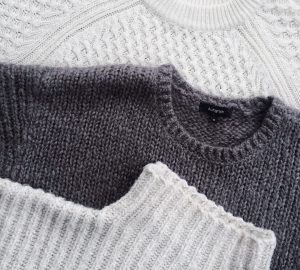Pukaar Magazine’s Laura Jane Bateman explores the fashion industry and its impact on the environment.
‘Sustainability’ has become a buzzword in the fashion industry. To be deemed sustainable you must meet the needs of today’s changing world without compromising the future. But what actions are the fashion industry taking to support this movement? Here we discuss a number of sustainable measures you can take and whether sustainability and fast fashion can co-exist.

Fashion is one of the largest contributors to climate change due to its extensive use of fossil fuels, and production of carbon footprint and greenhouse gas emissions. Earlier this year, the World Economic Forum identified the fashion industry as the third largest polluter afterfood and construction. This is a powerful position to be in; an industry with such great influence has the capacity to impact economic, social and environmental issues. There are a lot of small sustainable movements occurring simultaneously however the fashion industry must be held accountable and take responsibility for its share of any improvements, although small changes are arguably better than none at all.
When it comes to fabric selection, using the organic form of natural fibres such as cotton, linen and hemp makes them more sustainable. Organic fibres are grown and farmed without the use of toxic, synthetic aids like fertilisers that have a potent impact on the climate. Similarly, adding a recycled element to synthetic fabrics such as polyester and nylon reuses existing resources and requires less harmful chemicals in the process so the fibre is regenerated to create a new product rather than relying on brand new resources. But are minor changes such as choice of fabric enough to consider our clothes sustainable?
Fast fashion itself contradicts many aspects of sustainability; brands should be making bigger changes to stop the “fast” element of disposable fashion. The term fast fashion exists to offer quick response to new, upcoming trends and deliver them to the shop floor within as little as six weeks. Aspects of the supply chain are rushed with no consideration for eco-friendly alternatives as these are likely to cost more and slow down the process. For instance, manufactured goods are shipped by airplane as this mode of transport offers the quickest delivery, even though it releases the most emissions causing irreversible chemical reactions that contribute to global warming.

TALA, founded by entrepreneur Grace Beverley in 2019, is a slow fashion brand. It uses a certified environmentally-friendly nylon called Q-Nova to produce women’s activewear. This fabric is created using regenerated waste materials that would have otherwise been disposed of. TALA prides itself on being a sustainable brand and recently started selling on one of Britain’s largest online retailers, ASOS. This partnership caused some controversy as theoretically ASOS is a hub for fast fashion brands, however Beverley argued that this decision was taken to encourage slow fashion to exist alongside fast fashion, and prove that it can be just as attainable as fast fashion without costing much more.
Another criteria of any sustainable brand is to declare supply chain transparency; a brand must be more honest about how its goods are produced, packaged and delivered. In their recent fashion transparency report, Fashion Revolution discuss the responsibility of brands being open about the sustainable measures that they follow and their place in the sustainable fashion world. The report states that this industry ‘relies on 98 million tonnes of non-renewable resources per year’ which demonstrates the scale of the issue.
Hennes and Mauritz, better known as H&M, are a fast fashion brand attempting to improve their efforts in sustainability by introducing more organic and recycled fabrics, using less harmful chemicals and offering rewards to members who purchase ‘Conscious’ products. Their mission is to be ‘climate positive’ by 2040. H&M have divided the public suggesting that it’s impossible for the brand to be sustainable until all aspects of its supply chain are declared in full. Even though they topped the Fashion Transparency Index of 2020, they have been accused of greenwashing: a term that refers to presenting misleading information and giving a false impression that a company is environmentally sound. H&M mention transparency, animal welfare and healthy ecosystems such as waste and recycling in their future plans yet they avoid providing exact information which can be misleading for the consumer. Actor Maisie Williams joined H&M earlier this year as their Global Sustainability Ambassador. Williams justifies this decision similarly to Beverley’s decision to sell on ASOS, that having some sustainable measures in place is better than having none at all.

The latest climate change report from the United Nations announced ‘code red for humanity’. We need to continue to make more sustainable choices to drastically improve the present world without compromising future generations, not just in the fashion but everyday life. In summary, it will take more than just paper carrier bags for brands to be considered sustainable. A paradigm shift in mindset is required first and foremost to accept that, as consumers, we can be fashionable yet also sustainable without breaking the budget, and if brands start with this mindset then improvements can be made by both parties.
Let’s continue to make sustainability a talking point, take action where possible, strive to improve, and hold ourselves accountable in the hope that our favourite fashion brands will do the same.






